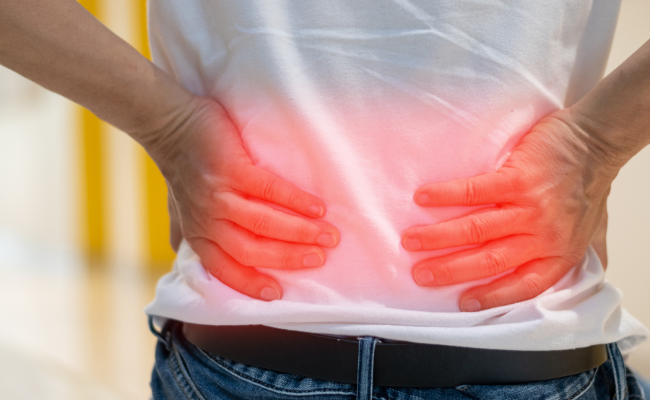How to Treat Slipped Disc?
- January 04, 2024
- No Comments

What is a Slipped Disc?
A slipped disc, alternatively termed a herniated disc or disc prolapse, occurs when the soft inner core of a spinal disc protrudes through its resilient outer layer. This displacement can cause irritation to nearby nerves, resulting in symptoms like pain, numbness, or weakness in the affected region. The spinal discs, functioning as cushions between the vertebrae, play a vital role in ensuring flexibility and absorbing shocks. However, when a disc slips, it exerts pressure on the nerves, giving rise to a range of symptoms.
When a spinal disc protrudes, commonly known as a slipped or herniated disc, it can exhibit symptoms such as pain and numbness. In more severe instances, surgical intervention may be necessary. The spinal column, an intricate structure comprising stacked vertebrae, depends on these discs as protective cushions that absorb shocks from routine activities like walking, lifting, and twisting.
Why Does a Slipped Disc Occur?
Several factors can contribute to the development of a slipped disc. Aging is a primary factor, as the discs naturally lose moisture and flexibility over time, making them more prone to tearing or rupturing. Additionally, excessive strain on the spine due to activities like heavy lifting, improper lifting techniques, or sudden twisting motions can increase the risk of disc herniation. Genetics, obesity, and a sedentary lifestyle may also play a role in predisposing individuals to this condition.
How to Identify a Slipped Disc?
- Recognizing the symptoms of a slipped disc is crucial for early diagnosis and effective treatment. Common symptoms include localized or radiating pain, numbness or tingling, muscle weakness, and changes in reflexes. The location of these symptoms depends on the affected disc and the nerves involved. For example, a slipped disc in the lower back may cause pain and numbness in the legs, while a disc issue in the neck can lead to symptoms in the arms and shoulders.
- Medical professionals often use imaging tests such as MRI or CT scans to confirm the diagnosis and determine the extent of the disc herniation. A thorough physical examination and discussion of medical history also contribute to the diagnostic process.
Treatment Solutions for Slipped Discs:
Conservative Management:
- Rest and Activity Modification: Initially, patients with a slipped disc are often advised to rest and avoid activities that exacerbate symptoms. This may include modifying daily activities to reduce strain on the spine.
- Pain Medications: Over-the-counter or prescription pain medications, such as nonsteroidal anti-inflammatory drugs (NSAIDs) or muscle relaxants, can help alleviate pain and inflammation.
- Physical Therapy: Specific exercises and stretches prescribed by a physical therapist can strengthen the muscles supporting the spine, improve flexibility, and promote proper posture.
Epidural Steroid Injections:
- In cases where pain and inflammation are severe, epidural steroid injections may be recommended.
- These injections deliver anti-inflammatory medication directly into the affected area, providing temporary relief and reducing inflammation around the nerves.
Surgical Intervention:
- Microdiscectomy: For cases where conservative measures do not yield satisfactory results, surgical intervention may be considered. Microdiscectomy involves removing the portion of the disc that is pressing on the nerve, relieving the associated symptoms. This procedure is minimally invasive and aims to preserve as much healthy disc tissue as possible.
- Spinal Fusion: In more severe cases, especially when multiple discs are involved or there is instability in the spine, spinal fusion may be recommended. This surgical procedure involves fusing two or more vertebrae together to stabilize the spine and prevent further disc herniation.
Benefits of Treating a Slipped Disc:
- Pain Relief: Effective treatment can significantly alleviate the pain associated with a slipped disc, allowing individuals to regain their mobility and resume normal activities.
- Improved Functionality: Physical therapy and rehabilitation programs are designed to improve the strength and flexibility of the spine, leading to better overall functionality and reduced risk of future disc issues.
- Prevention of Complications: Timely and appropriate treatment can prevent the progression of a slipped disc and reduce the risk of complications, such as chronic pain, muscle weakness, or nerve damage.
- Enhanced Quality of Life: By addressing the underlying causes and managing symptoms, individuals with a slipped disc can experience an improved quality of life. This includes better sleep, increased energy levels, and a return to regular daily activities.
- Avoidance of Surgery in Some Cases: Early intervention with conservative measures may eliminate the need for surgery in certain individuals, providing a non-invasive and less disruptive path to recovery.
Comments (0)